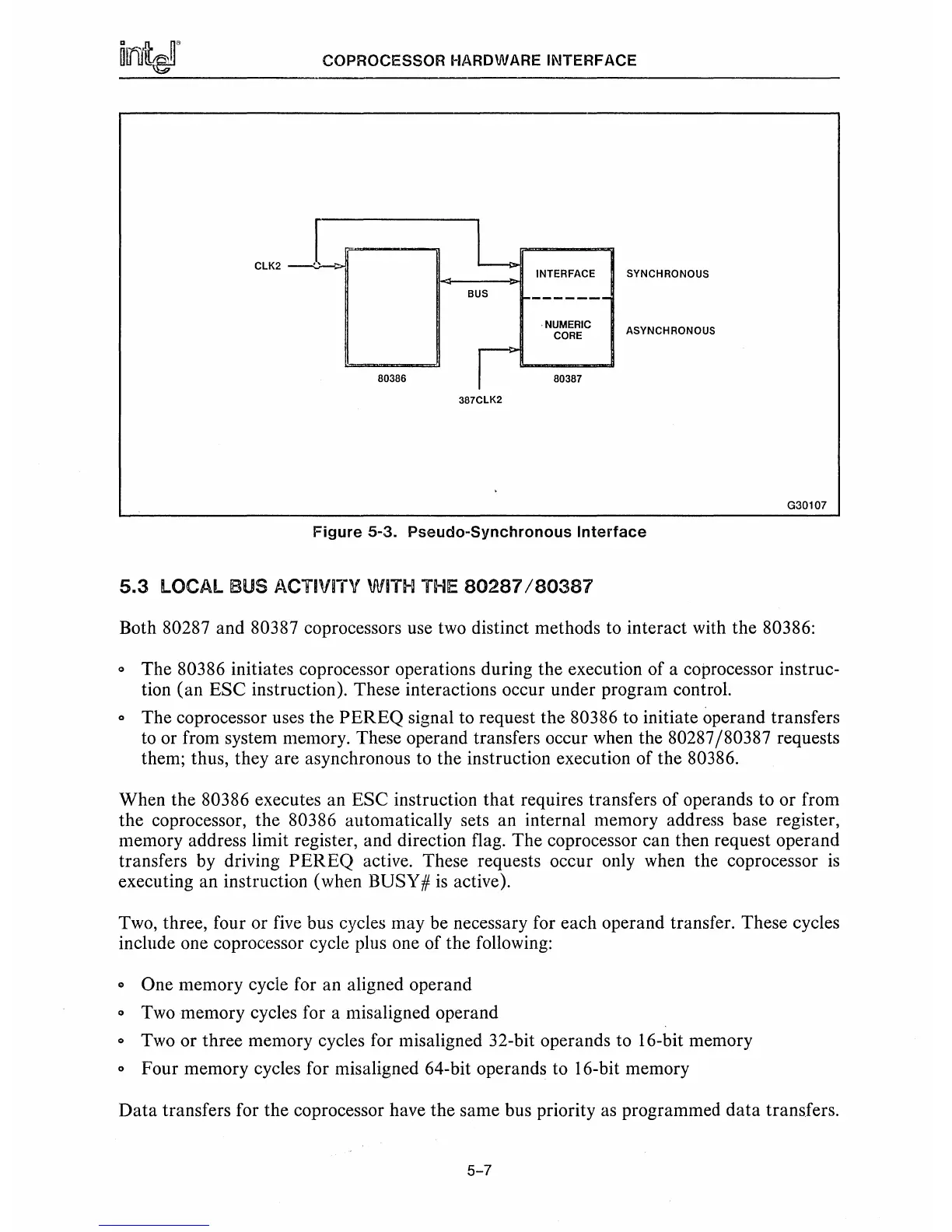COPROCESSOR HARDWARE INTERFACE
J
L
CLK2
INTERFACE SYNCHRONOUS
BUS
------
. NUMERIC
ASYNCHRONOUS
CORE
80386 80387
387CLK2
G30107
Figure
5-3.
Pseudo-Synchronous
Interface
5.3
LOCAL BUS ACTIViTV WiTH THE
80287/80387
Both 80287 and 80387 coprocessors use two distinct methods to interact with the 80386:
o The 80386 initiates coprocessor operations during the execution of a coprocessor instruc-
tion (an
ESC instruction). These interactions occur under program control.
o The coprocessor uses the
PEREQ
signal to request the 80386 to initiate operand transfers
to
or from system memory. These operand transfers occur when the 80287(80387 requests
them; thus, they are asynchronous to the instruction execution of the 80386.
When the
80386 executes an ESC instruction that requires transfers of operands to or from
the coprocessor, the
80386 automatically sets an internal memory address base register,
memory address limit register, and direction flag. The coprocessor can then request operand
transfers
by
driving
PEREQ
active. These requests occur only when the coprocessor
is
executing an instruction (when BUSY #
is
active).
Two, three, four or five bus cycles may be necessary for each operand transfer. These cycles
include one coprocessor cycle plus one of the following:
• One memory cycle for an aligned operand
• Two memory cycles for a misaligned operand
o Two or three memory cycles for misaligned 32-bit operands to 16-bit memory
o Four memory cycles for misaligned 64-bit operands to 16-bit memory
Data
transfers for the coprocessor have the same bus priority
as
programmed data transfers.
5-7

